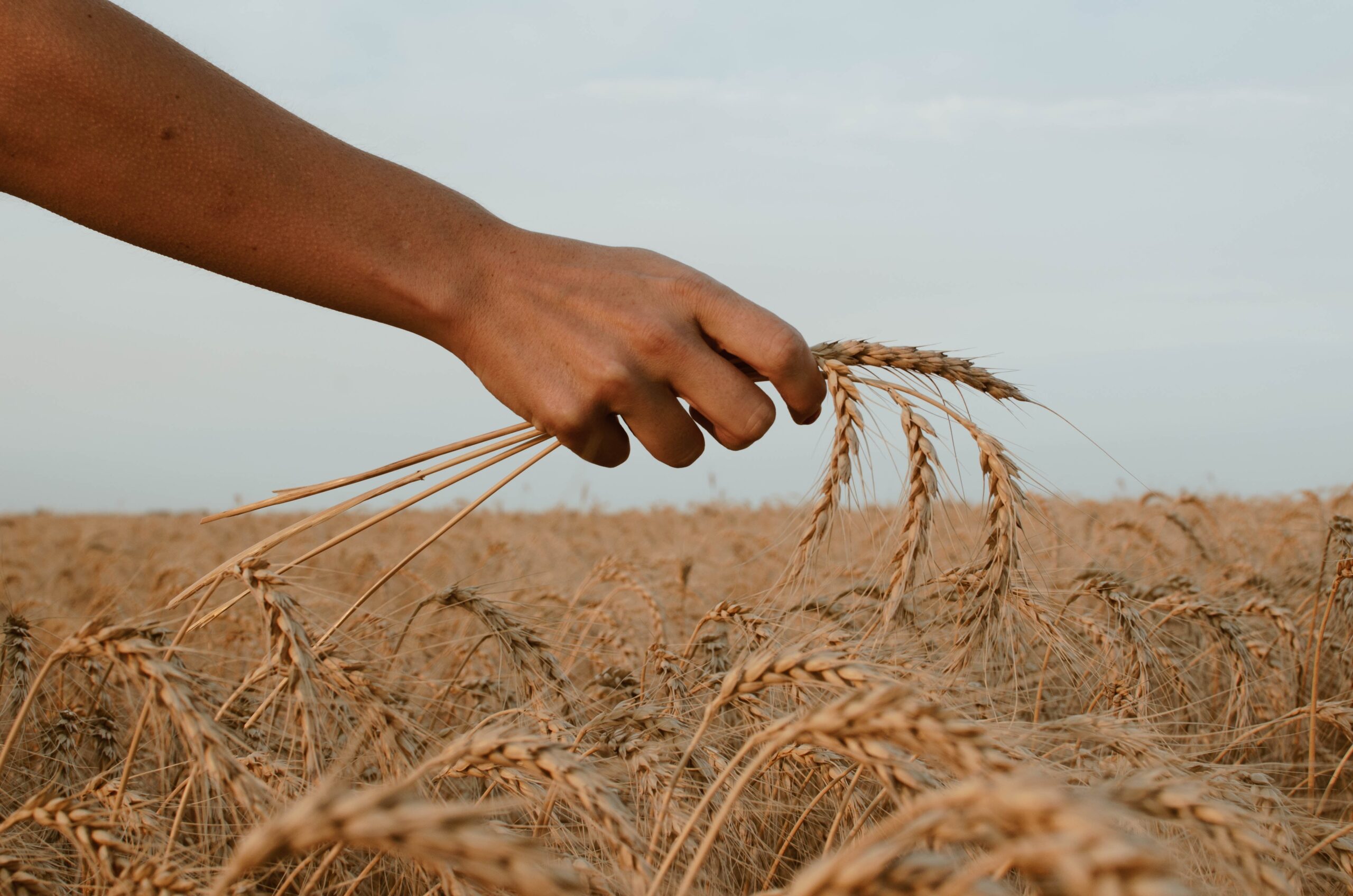
In a world where the health of our planet and the quality of our food are increasingly intertwined, the debate between biodynamic vs regenerative farming takes center stage.
Both methods promise a return to more natural, sustainable agricultural practices, with biodynamic farming weaving in holistic, cosmic principles and regenerative agriculture focusing on healing and renewing the Earth itself.
But, what is the difference between biodynamics and regenerative agriculture? More importantly, which of these is the sustainable farming method of the future?
We’ll reveal why regenerative farming is important in this detailed guide as we compare and contrast it to biodynamics. It not only preserves our land, it actively restores it. It’s also better for the farmer and farming communities while creating healthier, better-tasting food for the consumer.
If you want to support regenerative agriculture firsthand, you can shop right here at Carnivore Snax where you’ll gain access to healthy meat snacks sourced from the most elite, ethical regenerative farms in the country. For now, let’s look at the difference between biodynamic and regenerative agriculture.
What is the Difference Between Biodynamic and Regenerative Agriculture?
It’s essential to first understand the core principles and practices of each approach to make an informed comparison between biodynamic and regenerative agriculture. So, let’s look at how each works below.
How Biodynamic Farming Works
Biodynamic farming is a holistic approach to agriculture, integrating ecological, ethical, and spiritual considerations. Its origins trace back to the early 20th century teachings of Rudolf Steiner.
Biodynamic farms strive for self-sufficiency, using only materials generated on the farm. Composting and recycling of organic material play a crucial role. You’ll also see efforts to conserve water through the use of solar and wind pumps, wetland protection, and efficient irrigation.
Preparations made from herbs, minerals, and animal manures are used to enhance soil health and plant growth. Planting and harvesting are often timed according to astrological configurations, reflecting a deep connection to cosmic rhythms.
Biodynamics views the farm as an interconnected living organism. This includes integrating crop diversity, rotating crops, and incorporating livestock to maintain a balanced ecosystem.
Farmers who operate under the principles of biodynamics must have a minimum of 10% of their land used as a biodiversity reserve, protecting endangered species and habitats. This is one of the many things that make biodynamics unique – but let’s introduce the other half of this conversation now.
How Regenerative Agriculture Works
Regenerative agriculture focuses on restoring and enhancing the health of soil and ecosystems. It’s less prescriptive than biodynamic farming, emphasizing outcomes rather than specific practices.
You can find a more thorough regenerative agriculture definition in our blog, but how does regenerative agriculture work? While there are a multitude of regenerative farming techniques, most of them work to optimize soil health. This includes no-till farming, cover cropping, and diverse crop rotations to increase soil organic matter and promote a healthy soil microbiome.
Another key component of this approach to farming is regenerative agriculture carbon sequestration. Atmospheric carbon is captured and stored in the soil to preserve the land and enhance soil fertility even further.
Similar to biodynamics, regenerative agriculture views the entire world as one interconnected organism. This means that it’s not just about plants – but the animals which inhabit our earth.
Techniques like rotational grazing not only allow regenerative cattle to live healthier, happier lives, but also further enhance the land by giving it a chance to recover between seasons.
And, just like biodynamics, there are water benefits of regenerative agriculture too. Regenerative farming prioritizes efficient water use and conservation, fostering a habitat that supports a wide range of plant and animal species. This means that regenerative agriculture biodiversity is high.
There is so much more to the story including the use of regenerative agriculture fertilizer and natural pest prevention tactics. So, we encourage you to learn more about how to do regenerative agriculture, regenerative chicken farming, or regenerative dairy farming in our blog.
In the meantime, we’re going to get into the meat and potatoes of our biodynamic vs regenerative farming debate. Which is the better approach to agriculture?
Biodynamic vs Regenerative Farming: Which Approach to Agriculture is Superior?
Which is Better for the Consumer?
Focusing on food quality in terms of taste, nutrition, and the avoidance of synthetic inputs is essential for a conversation on which is better between biodynamic vs regenerative farming.
The strict guidelines for biodynamic certification ensure that the food is grown without synthetic pesticides and fertilizers, which can contribute to better taste and potentially higher nutritional value. Moreover, the biodynamic emphasis on biodiversity can lead to a diverse range of nutrient-dense foods.
You’ll experience much of the same with regenerative agriculture products. This approach is centered around soil health, which is directly linked to the nutritional content of the food produced. Healthier soils typically yield crops with higher levels of vitamins and minerals.
The focus on organic practices means that regenerative farms also avoid synthetic chemicals, potentially resulting in cleaner and more wholesome food. The taste of products from regenerative agriculture is often superior, attributed to the enriched soils in which they are grown.
Both regenerative farming and biodynamics strictly prohibit the use of synthetic pesticides and fertilizers, relying instead on natural composts and preparations. This commitment not only preserves the land but also ensures that consumers are not exposed to harmful chemical residues in their food.
Which is Better for the Land?
Now, let’s look at which approach is better for our land itself. Similar to the consumer benefits, you’ll discover that both approaches are gentler and more restorative for our lands than conventional farming tactics used today.
The use of biodynamic preparations and organic composts aims to enrich the soil naturally, promoting long-term soil health and preventing erosion. And as the name suggests, biodynamic farms often boast a high level of biodiversity, supporting various plant and animal species, which contributes to the overall health of the land.
There are similar benefits of regenerative farming. The primary focus of regenerative agriculture is to restore and enhance soil health. Practices like no-till farming, cover cropping, and diversified crop rotations not only prevent soil degradation but actively improve soil structure and fertility.
But, the key difference is that regenerative agriculture prevents more greenhouse gases from blasting a hole in our ozone layer. This approach traps atmospheric carbon dioxide in the soil and uses it to the farmer’s advantage rather than our planet’s detriment.
Efficient water use and conservation methods are integral to regenerative agriculture just like in biodynamics, helping to preserve water resources and reduce soil erosion.
So, while both practices are beneficial, regenerative agriculture’s broader environmental impact, particularly in terms of soil regeneration and carbon sequestration, positions it as a more impactful approach for preserving our lands and ensuring their sustainability for the future.
Which is Better for the Farmer?
The heroes working in the field to feed our world are often overlooked, but not in this comparison of biodynamic vs regenerative farming. Which approach is better for them from a health, profitability, and fulfillment standpoint?
Biodynamic products often command a premium price in the market due to their perceived quality and the stringent certification process. However, the initial investment and maintenance for biodynamic certification can be high.
The same is true of regenerative farming, which requires higher setup costs followed by lower operational costs down the road. The initial investment will pay for itself in future generations. And, regenerative farms are more profitable than their traditional counterparts because of not just lower costs, but higher prices at market.
Finances aside, though, we need to factor in working conditions. Biodynamic farming typically involves more labor-intensive practices than conventional farming. While this can be physically demanding, it often brings a higher sense of purpose and fulfillment, rooted in the deep connection to the land and the ecosystem.
On the other hand, regenerative farming often involves a learning curve as farmers adopt new practices. However, the focus on soil health can lead to less physical strain over time compared to conventional methods. It’s also safer for the farmer as they’re not exposed to pesticides and other synthetic inputs.
So, Which is the Better Approach to Agriculture?
In the comparison between biodynamic vs regenerative farming, it’s clear that both approaches offer commendable alternatives to conventional agriculture, focusing on sustainability and environmental stewardship.
While they share many similarities, one has an edge. In weighing both the pros and cons of regenerative agriculture compared to biodynamics, it stands out due to its active role in restoring and enhancing land health.
This focus on revitalizing soil, coupled with its broader ecological benefits, positions regenerative agriculture as the superior method. It not only maintains but actively improves the land, making it a more impactful choice for a sustainable agricultural future.
However, both approaches are immensely better than commercial farming practices that are commonplace today. We encourage you to advocate for one or the other in your own life!
What About Other Farming Methods?
We’ve compared regenerative farming to a multitude of other methods, too, if you’d like to see how it stacks up to the field. See our breakdowns below:
But the truth is you’ll discover a similar outcome in these resources to this one. Regenerative farming stands at the pinnacle of modern-day agriculture for the consumer, the farmer, and the land upon which food is grown/raised.
So, if you want to learn how to do regenerative farming at home or try eating a regenerative agriculture diet, explore our blog. We have tips just for you. You can also get the best-tasting regenerative agriculture meat snacks right here at Carnivore Snax.
We source our meat chips from the most elite, ethical regenerative farms in the nation. They’re a perfect choice for those looking for the best carnivore diet snacks or simply wanting to eat a high-protein diet.
Browse our ribeye chips, steak chips, lamb chips, beef chips, brisket chips, chicken chips, and pork chips and taste the difference firsthand!
Parting Thoughts on Biodynamic vs Regenerative Farming
As we conclude our exploration of biodynamic vs regenerative farming, it’s evident that both methods greatly surpass conventional practices, offering pathways to more sustainable and environmentally conscious agriculture.
While biodynamic farming brings a unique, holistic approach, regenerative farming takes the lead with its active restoration of land health and broader ecological impact.
Embracing these sustainable practices, Carnivore Snax proudly offers products born from regenerative farming – a testament to our commitment to quality and environmental responsibility.
Join us in this sustainable journey and savor the difference with Carnivore Snax, where every bite supports a healthier planet. Get your carnivore chips today!





